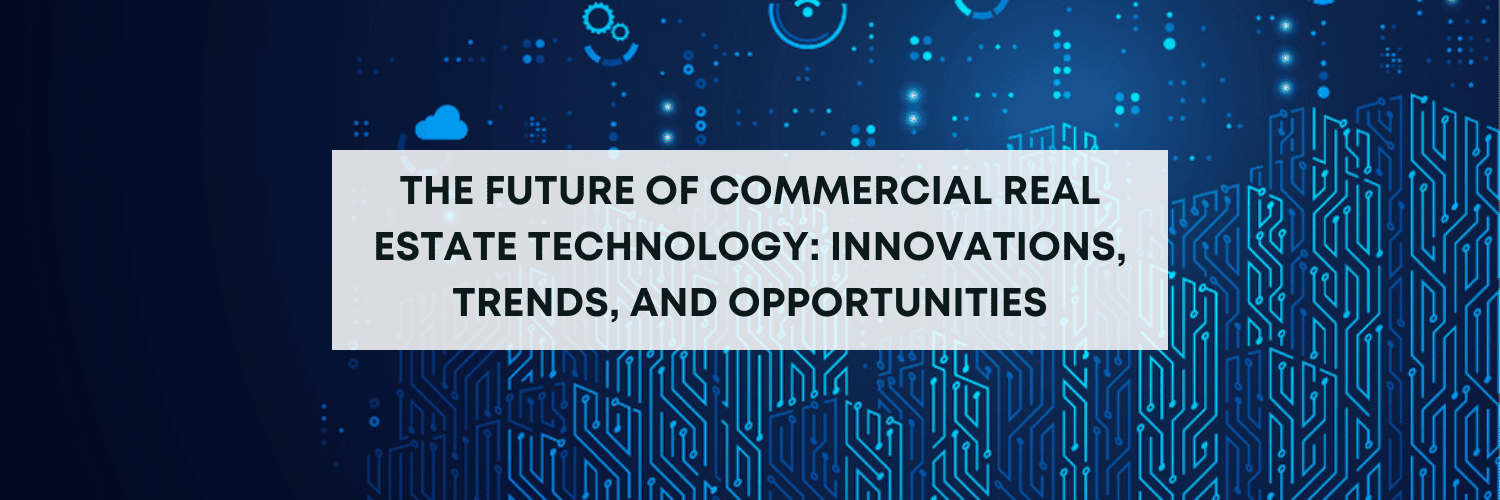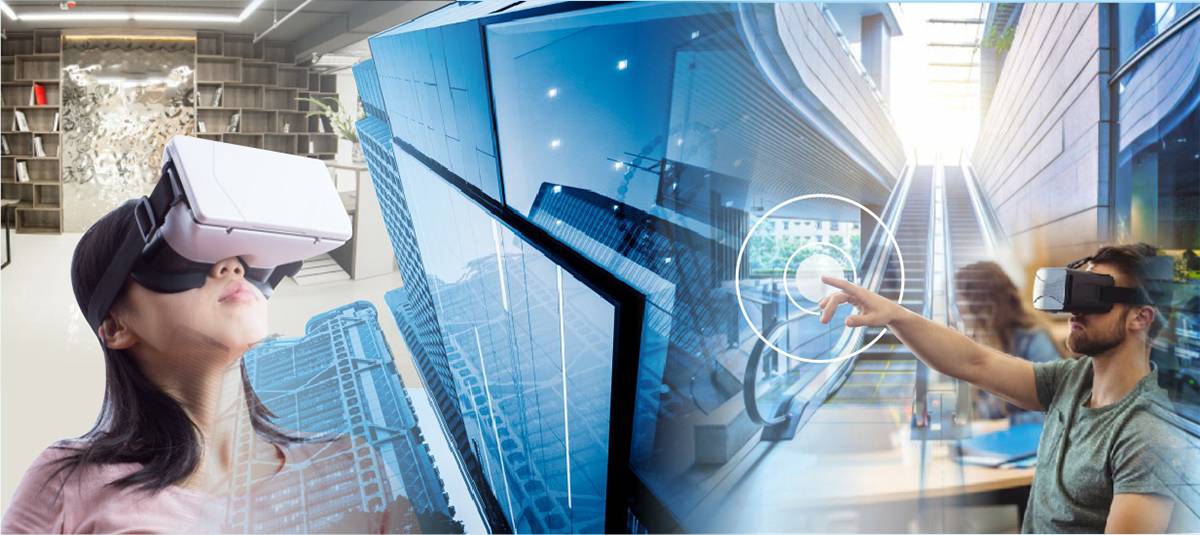
The Future of Commercial Real Estate Technology: Innovations, Trends, and Opportunities
Commercial real estate technology, or proptech, is a rapidly evolving field that combines traditional real estate practices with innovative technology solutions. The integration of technology into the real estate industry has the potential to transform the way we design, build, operate, and use buildings and spaces.
The adoption of commercial real estate technology is driven by several factors, including the need for more efficient and cost-effective operations, the desire for improved tenant and user experience, and the opportunity to unlock new value and revenue streams.
In this blog post, we will explore the latest innovations and trends in commercial real estate technology, as well as the opportunities and best practices for adopting these technologies. We will also provide actionable tips and strategies for investors, property managers, brokers, developers, and other real estate professionals who are looking to stay ahead of the curve and leverage the power of technology to drive success in their businesses.

Innovations in Commercial Real Estate Technology
Proptech: The intersection of real estate and technology
Proptech is a term used to describe the intersection of real estate and technology. It includes a broad range of technologies and applications, from property management software and online marketplaces to building automation systems and 3D printing. Proptech has the potential to disrupt traditional real estate practices and create new opportunities for investors, developers, and property managers.
Artificial Intelligence and Machine Learning: Automating and optimizing real estate operations
Artificial Intelligence (AI) and Machine Learning (ML) are transforming the way real estate operations are conducted. AI and ML algorithms can analyze vast amounts of data to automate and optimize tasks such as building maintenance, energy management, and tenant communication. These technologies can help improve the efficiency and cost-effectiveness of real estate operations, while also enhancing the overall user experience.
Smart Buildings: Enhancing occupant experience and energy efficiency
Smart buildings are buildings that use advanced technologies, such as sensors, automation, and analytics, to enhance occupant experience and energy efficiency. These technologies can help reduce energy consumption, improve indoor air quality, and optimize building performance. Smart buildings also offer benefits such as increased security and convenience for tenants and occupants.
Digital Twin: Building a virtual model of a physical space
A digital twin is a virtual model of a physical space, such as a building or a city block. Digital twins use sensors and other data sources to create a detailed, real-time representation of the physical space. This technology can be used to monitor building performance, simulate scenarios, and identify opportunities for optimization and improvement.
Blockchain: Streamlining real estate transactions and ownership records
Blockchain is a distributed ledger technology that can be used to streamline real estate transactions and ownership records. Blockchain can help reduce transaction costs, increase transparency, and improve the speed and efficiency of real estate transactions. It can also help prevent fraud and improve the accuracy of ownership records.

Trends in Commercial Real Estate Technology
Augmented Reality and Virtual Reality: Transforming property tours and design visualization
Augmented Reality (AR) and Virtual Reality (VR) are transforming the way properties are marketed, designed, and experienced. AR and VR technologies can create immersive, interactive experiences that allow potential buyers and tenants to explore properties virtually. These technologies can also be used to facilitate design visualization and collaboration between stakeholders.
Internet of Things: Connecting and automating devices and systems in buildings
The Internet of Things (IoT) is a network of connected devices and systems that can be used to automate and optimize real estate operations. IoT technologies can be used to monitor and control building systems, such as HVAC and lighting, and collect data on occupancy, energy use, and other factors. This data can be used to optimize building performance and enhance the user experience.
Cloud Computing: Enabling remote work and collaboration
Cloud computing is a technology that enables remote work and collaboration by allowing users to access data and applications over the internet. Cloud computing can help real estate professionals work more efficiently and securely, while also reducing the need for physical infrastructure and hardware.
Data Analytics: Leveraging data to make better real estate decisions
Data analytics is the process of analyzing data to extract insights and make better decisions. In the context of commercial real estate, data analytics can be used to analyze market trends, assess property performance, and identify investment opportunities. By leveraging data analytics tools and techniques, real estate professionals can make more informed decisions and stay ahead of the competition.
Cybersecurity: Protecting against cyber threats
As real estate operations become increasingly digitized, cybersecurity has become a critical concern. Real estate professionals must take steps to protect their data and systems from cyber threats such as data breaches and ransomware attacks. This includes implementing strong security protocols and training employees to recognize and prevent cyber attacks.

Best Practices for Adopting Commercial Real Estate Technology
Assess your needs and goals
Before adopting any commercial real estate technology, it’s important to assess your needs and goals. What are the pain points in your current operations? What are your long-term objectives? By answering these questions, you can identify the technologies that are most relevant to your business and ensure that you’re making the right investments.
Prioritize user experience
Commercial real estate technology should prioritize user experience, whether it’s tenants, property managers, or investors. By focusing on user experience, you can improve satisfaction and loyalty, while also enhancing efficiency and productivity. This can be achieved by investing in user-friendly interfaces, intuitive design, and responsive customer support.
Embrace collaboration
Commercial real estate technology can be used to facilitate collaboration between stakeholders, such as property managers, tenants, and investors. By embracing collaboration, you can improve communication and transparency, while also increasing efficiency and reducing costs. This can be achieved by investing in collaboration tools, such as project management software and communication platforms.
Stay up to date on trends and innovations
Commercial real estate technology is a rapidly evolving field, and it’s important to stay up to date on the latest trends and innovations. By staying informed, you can identify new opportunities and stay ahead of the competition. This can be achieved by attending industry conferences, following thought leaders on social media, and participating in online communities.
Invest in training and education
Finally, it’s important to invest in training and education to ensure that your team has the skills and knowledge needed to effectively use commercial real estate technology. This can include training sessions, online courses, and workshops. By investing in training and education, you can ensure that your team is equipped to leverage the full potential of these technologies.

Conclusion
Commercial real estate technology is rapidly evolving, and the pace of innovation shows no signs of slowing down. By adopting these technologies and staying ahead of the curve, real estate professionals can unlock new value and revenue streams, improve efficiency and productivity, and enhance the overall user experience. However, it’s important to prioritize user experience, collaborate effectively, stay informed on trends and innovations, and invest in training and education to ensure success.
The future of commercial real estate technology is bright, and it offers immense opportunities for real estate professionals to streamline their operations, enhance user experience, and unlock new revenue streams. By adopting best practices such as assessing needs and goals, prioritizing user experience, embracing collaboration, staying up to date on trends and innovations, and investing in training and education, real estate professionals can ensure that they’re making the right investments and staying ahead of the curve.
If you’re looking to stay ahead of the competition in the commercial real estate industry, contact North Star Commercial Real Estate Advisors today. Our team of experienced professionals can help you assess your needs and goals, identify the technologies that are most relevant to your business, and provide ongoing support and training to ensure that you’re maximizing the potential of these technologies. With North Star, you can unlock new value, improve efficiency and productivity, and enhance the overall user experience. Contact us today to learn more.

